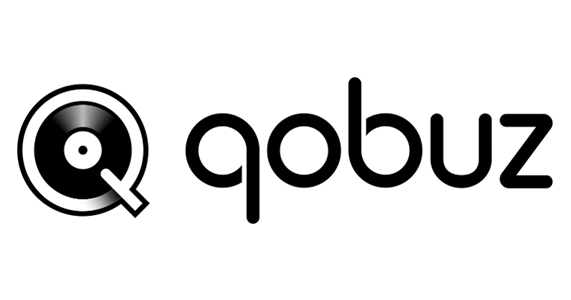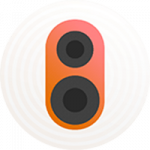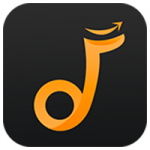There are more and more music streaming platforms released in these years. Among them, there are a lot of services that allow you to stream high-quality music. Tidal and Qobuz are two of the most popular platforms. Both of them offer high-definition audio, exclusive content, and unique features, making them standout choices for those who prioritize sound quality. However, it can be tough to decide which platform is the best for you. In this post, we will explain Tidal vs Qobuz, which is better for you. You can learn the main features and key differences between Tidal and Qobuz, such as their music quality, content libraries, device compatibility, pricing, and more. By the end, you’ll have a better idea of which platform suits your needs. Additionally, we will introduce a helpful tool that can enhance your music experience with Tidal. Without further ado, let’s explore them now.

Part 1. What Is Tidal & Qobuz?
Before diving into the detailed comparison between Tidal and Qobuz, let’s take an overview of Tidal and Qobuz.
Tidal is a global music streaming and entertainment service, known for its emphasis on offering lossless streaming. With Tidal, you can enjoy music with CD-quality sound. It is a subscription-based music service launched in 2014 by a group of artists, offering a wide range of subscription tiers. Tidal styles itself as the HiFi fan’s music streaming service. Whether you’re a casual listener or a serious audiophile, Tidal’s range of features and content make it a popular choice for those who want more from their streaming service.

Qobuz is a French digital music store and streaming service that has captivated popularity and reputation due to its high-fidelity audio. Many users perceive Qobuz as a pioneer in the high-resolution audio streaming space since it provides a vast library of tracks in lossless CD quality and extends beyond. Thus, you can experience music with greater detail. Beyond the quality, Qobuz boasts a large catalog of genres like classical and jazz. Qobuz also prioritizes a user-friendly interface that facilitates music discovery and exploration.

Part 2. Qobuz vs Tidal Catalog
For most listeners, access to their favorite artists and albums is paramount. In this section, we will explore how Tidal and Qobuz compare in terms of their music library offerings.
Tidal is known for its big music library, which contains not only a vast selection of music tracks but also various exclusive audio content. With Tidal, you are able to access more than 110 million songs and over 650,000 music videos. To satisfy diverse demands, Tidal provides more than 19 genres of music for you to explore. You can also find a variety of podcasts and live performances on Tidal. In general, Tidal is the winner when you talk about the width and depth of the music catalog.
More so, Tidal has built strong relationships with artists and labels. It often features exclusive album releases, behind-the-scenes content, and curated playlists. If you’re a fan of artists like Beyoncé and Jay-Z, Tidal is the go-to platform for exclusive content.
Qobuz’s 100 million song music library is slightly smaller than Tidal. It focuses more on specialized catalogs. It boasts a significantly larger collection of high-resolution tracks in genres like classical, jazz, and niche, Qobuz is particularly strong in classical and jazz music, which makes it a preferred option for those who appreciate these musical styles. In general, Qobuz does not offer as many mainstream tracks as Tidal, its selection is carefully curated, focusing on quality over quantity.
Part 3. Qobuz vs Tidal Audio Quality
While a vast music catalog is essential, the quality of music is equally crucial, particularly for audiophiles who prioritize exceptional sound. Let’s delve into how Tidal and Qobuz compare in terms of their audio fidelity.
Tidal is famous for its CD-quality audio with HiFi and Master quality layers. Tidal music now mainly has 3 tiers of sound quality: Low, High, and Max. For most listeners who want better sound quality than typical MP3s, High is a good choice with up to 16-bit, 44.1kHz. If you’re an audiophile, Tidal’s Max quality takes things a step further, providing high-resolution audio in MQA format, with bitrates up to 24-bit, 192kHz. When you have a compatible audio device and want to have an extreme listening experience, Tidal also offers Dolby Atmos and 360 Reality Audio options for you.
Qobuz is renowned for its dedication to high-fidelity audio. It prioritizes lossless formats and offers a vast library of high-resolution tracks. Most tracks from the Qobuz library now are all FLAC files up to 24-bit, 192kHz. FLAC is a lossless compression method, ensuring the sound you hear is as close to the original recording as possible. This is because Qobuz prioritizes delivering the original recording as accurately as possible. Thus, Qobuz is a top choice for those who want the best possible sound quality. It’s also important to note that, unlike Tidal’s MQA files, Qobuz delivers its high-res tracks natively, without any need for special decoding.
Part 4. Tidal vs Qobuz: User Interface & Experience
A good music service is not only about audio quality and content but also about how easy it is to navigate and use. Let’s look at the user experience on both Tidal and Qobuz.
Tidal has a modern and sleek interface that is easy to navigate. This interface is also intuitive to discover new music since Tidal excels at personalized recommendations, curated playlists, and exclusive content. The design of its homepage is simple. You can also share music tracks, playlists, and albums with friends on various social media platforms.
Qobuz’s interface is also simple and user-friendly. It offers straightforward navigation, making it easy to find new releases, curated playlists, and albums. However, the focus is more on genre-based exploration and editorial curation rather than personalized recommendations. For some beginners, Qobuz’s interface design is slightly more complex than to Tidal’s.
Overall, both platforms offer great user experiences, but Tidal’s design feels a bit more polished and user-friendly.
Part 5. Qobuz vs Tidal Price & Plans
Subscription plan and price is also an important factor when choosing a streaming service, especially for users who have a limited budget. It’s essential to select a cost-effective service. Both Tidal and Qobuz offer different subscription options to cater to various needs.
Tidal’s Pricing Structure
| Tidal Individual (Add-ons Available) | $10.99/month |
| Tidal Family (up to 6 members) | $16.99/month |
| Tidal Student (Add-ons Available) | $5.49/month |
| DJ Extension (Add-on) | $9/month |
Qobuz’s Pricing Structure
| Qobuz Studio | $10.83/month | Solo/Duo/Family/Student |
| Qobuz Sublime | $14.99/month | Solo/Duo/Family |
Part 6. Bonus: How to Play Tidal Music on Any Device Locally
Tidal vs Qobuz, which one suits your demands better? After reading the content above, you now should have an answer. For users who want to use Tidal, its subscription fee is not cheap. What’s more, a lot of devices aren’t compatible with Tidal. In such a case, you can use a tip to make full use of your Tidal subscription. That is to download your favorite Tidal tracks as local files that can be saved on your device permanently and can be played on almost any device. To achieve this goal, you will need a powerful converter to remove Tidal DRM. The best tool you can get is the Tunelf Tidal Music Converter.
Tunelf Tidal Music Converter is designed for all Tidal users. As a professional music converter, its decryption technology can help you download and convert Tidal songs, playlists, albums, and podcasts into diverse plain audio formats, such as MP3, FLAC, AAC, WAV, and so on. When the downloading process is complete, you can get DRM-free music files and keep them on your devices without worrying that they will expire. You can also have the freedom to import them to other platforms and devices for offline playback. What counts most is that the Tunelf software will keep all the original sound quality and ID3 tags to enhance your listening experience. What you can get from the Tunelf software is not only the lossless quality but also the full control or your favorite music.

Key Features of Tunelf Tidal Music Converter
- Download any Tidal content, including songs, albums, playlists, and artists
- Support exporting Tidal music to MP3, AAC, FLAC, WAV, M4A, and M4B
- Preserve a whole set of ID3 tag information in the downloaded Tidal songs
- Handle the conversion of Tidal music up to 5× faster speed and in batch
Part 7. Conclusion
In the battle of Tidal vs Qobuz, both platforms shine in different areas. If you are an audiophile who values native high-resolution audio and a more niche music catalog, Qobuz might be your best choice. However, if you want a larger music library, exclusive content, and a more polished user experience, Tidal is hard to beat. If you are a Tidal user who wants more freedom with your downloads, consider using Tunelf Tidal Music Converter to make your music experience even better.






